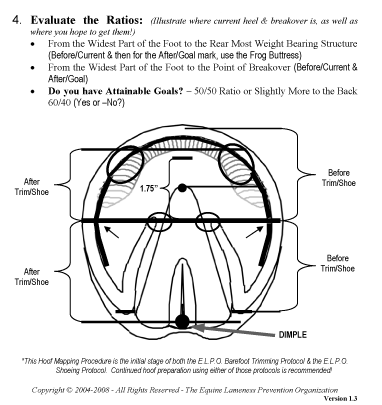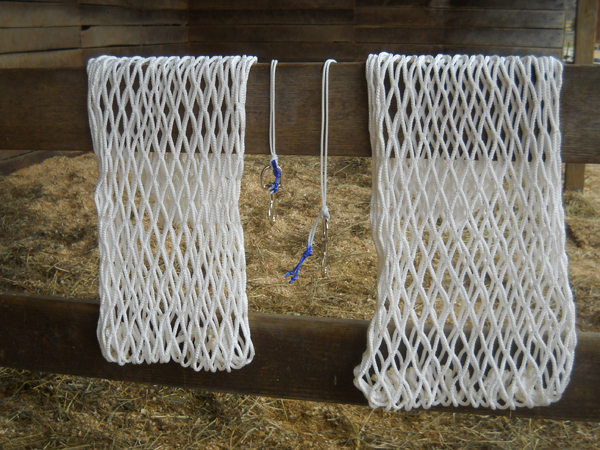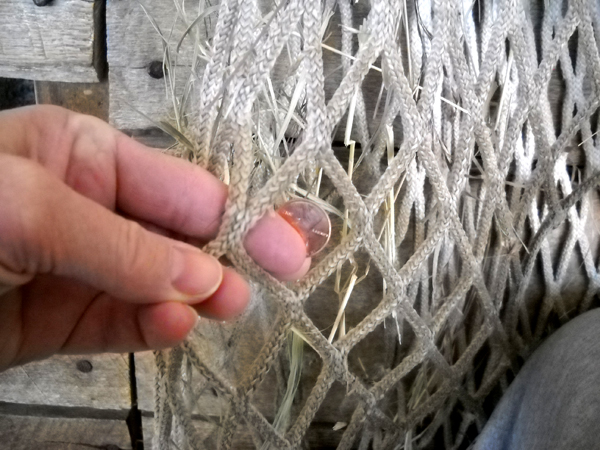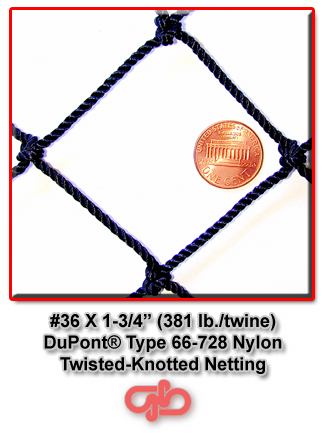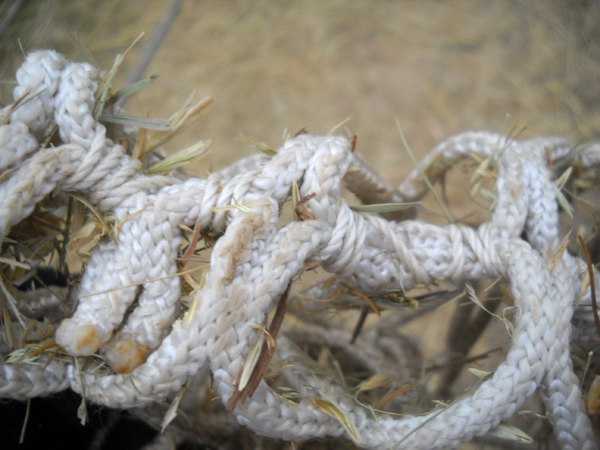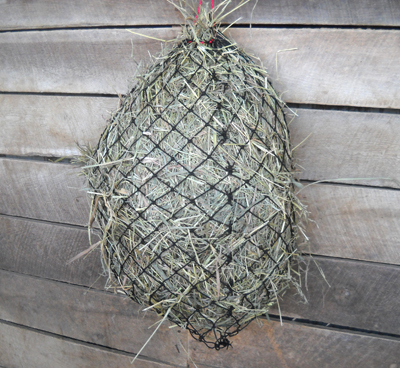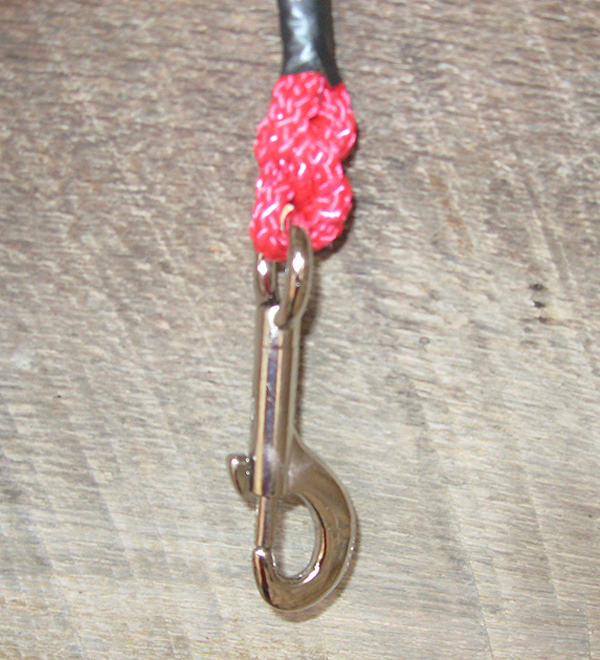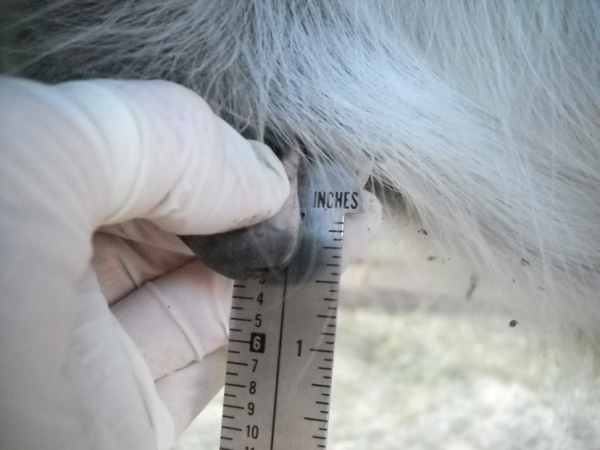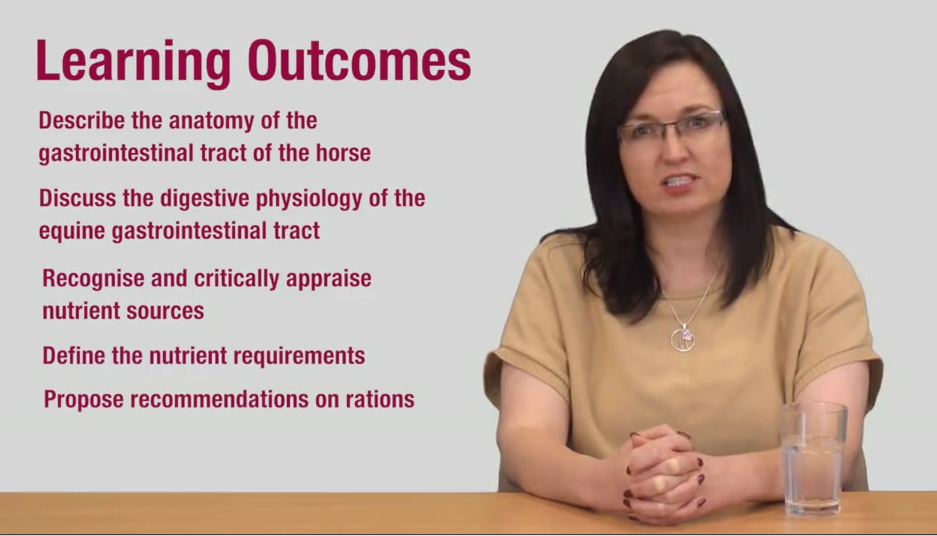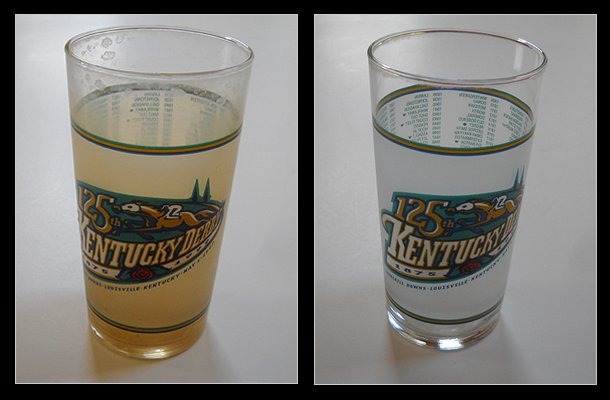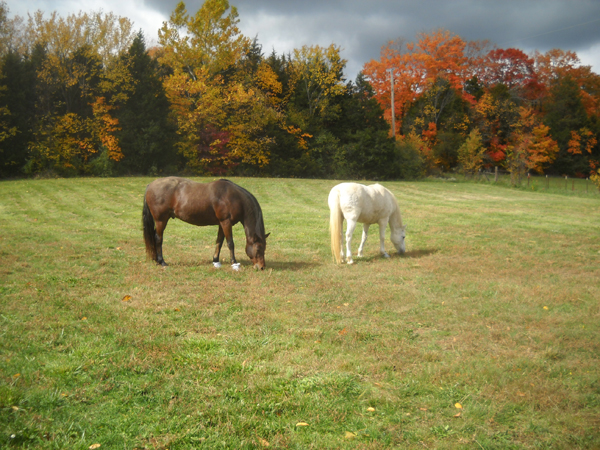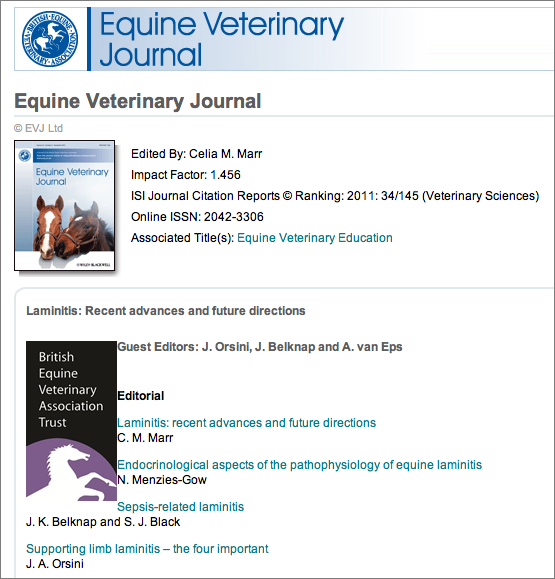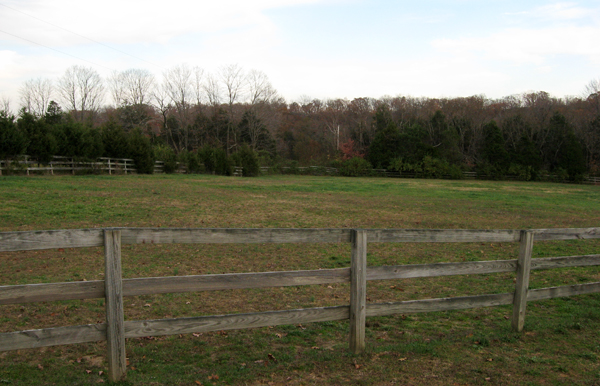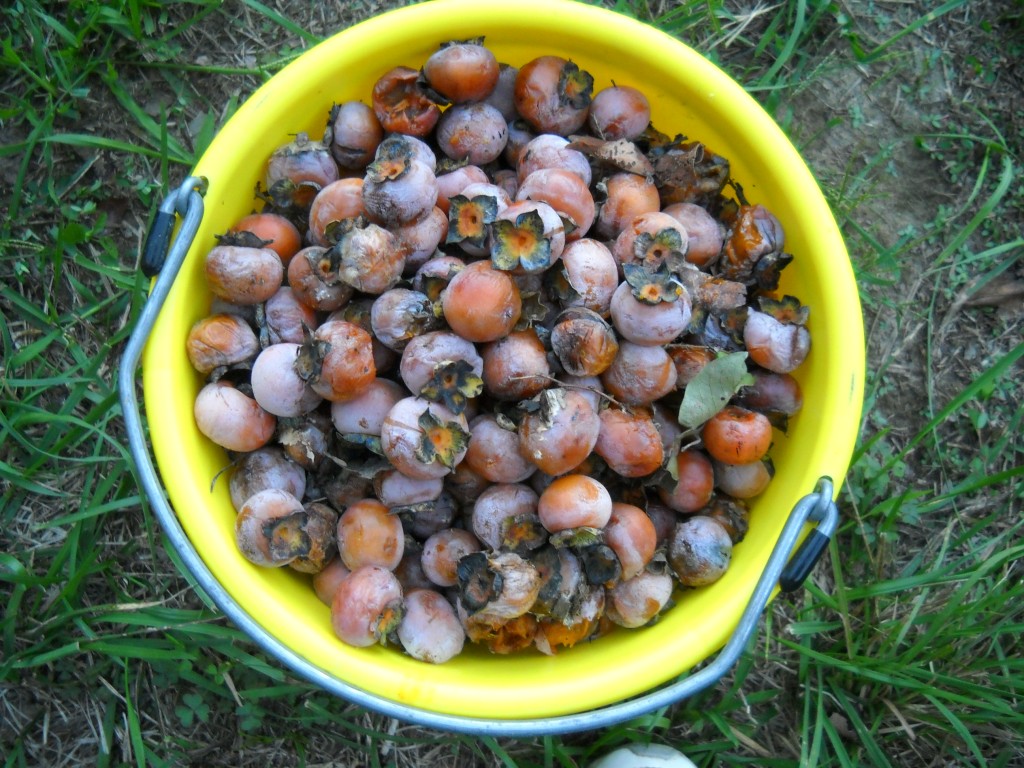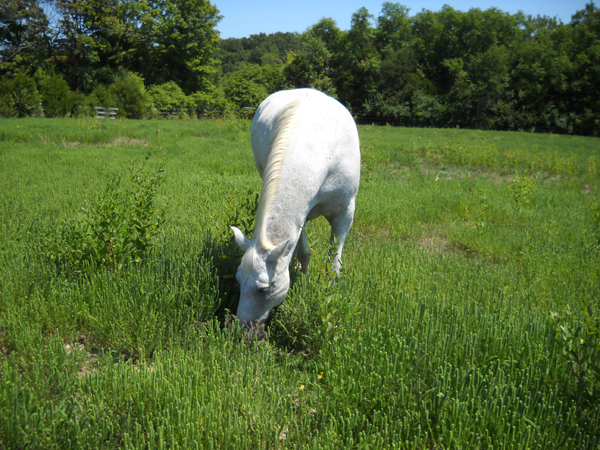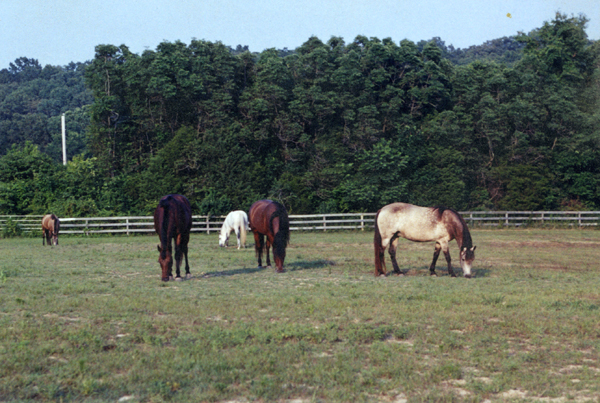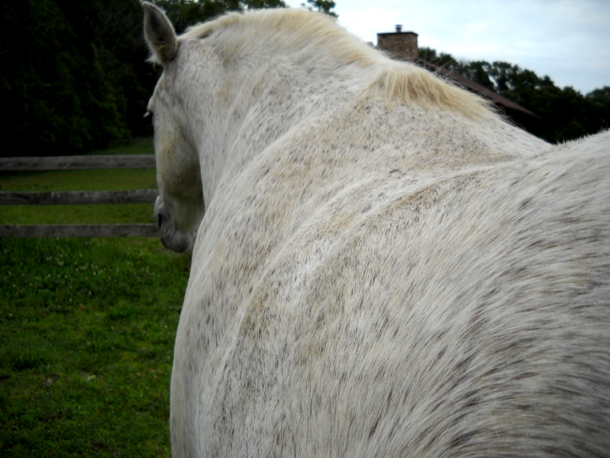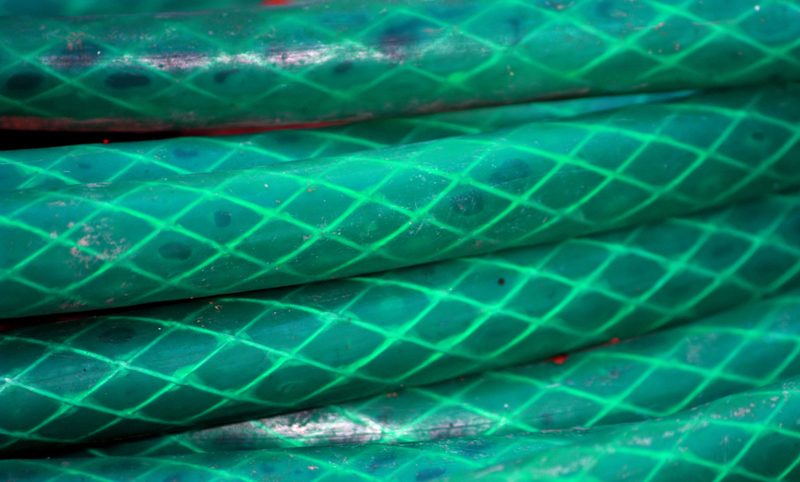Trimming laminitic horse is success
Horses with low-grade laminitis can be made comfortable and taken off bute while still having an active case of the disease. I didn’t believe that before this year. I thought the laminitis cascade had to be stopped before the horse would find any degree of comfort. I also thought the owner needed to find the trigger that caused the laminitis and remove it, or it was hopeless to waste time on the feet. I was wrong. The fact is that I may never find the trigger of my horses’ laminitis.
Success with my gelding Robin Hood has taught me that trimming the horse according to farrier Pete Ramey’s principles can help the coffin bone return to a better position and keep the toes from getting stretched out, even as low grade laminitis continues. Stretched toes put painful pressure on the front of the foot and lead to abscess after abscess, tearing the foot apart further.
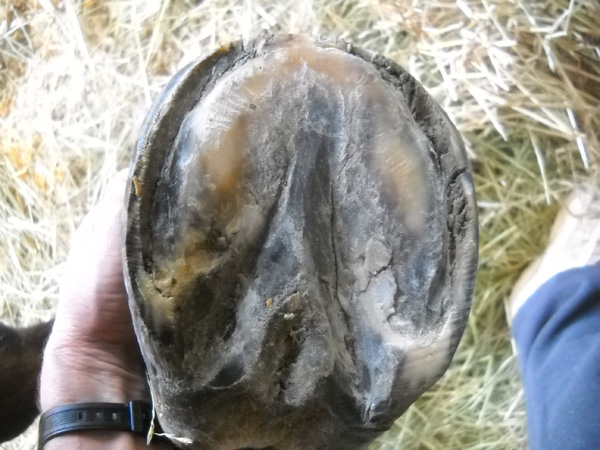
Robin Hood’s left front foot on May 18, 2013.
I’m still learning how to trim, but my beginner attempt has transformed the life of my gelding, Robin Hood. He has gone from almost needing a vet to put him down at low points in April, June and July 2013 to galloping across a field with his brother (with no help from anti-inflammatories) in November 2013.
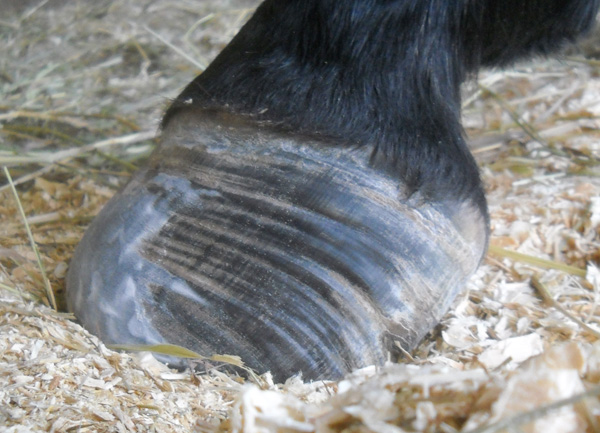
Robin’s left front foot on Nov. 3, 2013.
Robin Hood always seems to have chronic low grade laminitis, as evidenced by the continuously growing rings around his hoof and the steady, strong digital pulse that never goes away.
And, yet, I took him off bute in October 2013, and he didn’t get sore; he just continued to improve. My previous attempt to wean him off bute in July 2013 ended badly. He was in so much pain, he was shaking when he tried to get up. Success this time around has been from the trim.
Robin actually was doing fairly well in January and February 2013, but his toes got longer in the spring, and I failed to see it. One day in April, he couldn’t get up, and he was lying down, grunting and moving his feet in a circular motion as if he couldn’t stand the pain. It was heartbreaking.
I spent years trying to understand equine feet but never caught on enough to try to trim one.
As I noted in my previous post on this topic, a kind farrier named June started helping me by email in May 2013. Read the previous post to review the easy principles she provided for understanding the equine foot.
In this post, I want to show you the result.
When I look back at images of my trimming over the year, I see how slow I was to follow June’s directions. I was really scared. But once I did, Robin came around very quickly.
I also have to fess up to the fact that my farrier tool of choice is a belt sander. Think electric nail file. It’s a piece of sand paper that is looped around a machine that spins it.
It has its drawbacks. Sometimes, I sand things unintentionally. If I accidentally hit my pants with the sand paper, that section of my pants disappears, and I’m looking at my leg.
That speed and power are also the sander’s strength. With a laminitic horse that can’t hold up a foot for long, speed and power are a big plus.
The sum total of my life-changing trim on Robin has been sanding around the outside of the foot to remove the damaged hoof and then sanding the bottom of his foot at the toe, or beveling it, so his toe doesn’t touch the ground in front of the point of breakover.
Robin walking Oct. 20, 2013
Robin walking barefoot Oct. 28, 2013
Robin trots briefly on lungeline on Nov. 3, 2013
Robin galloping in lower field with Kurt on Nov. 3, 2013
My other post talks about marking up the foot with a marker to have guidelines. When I first started trimming Robin in May 2013, he was mostly lying down, and you’ll see in the video below that the lines I drew weren’t straight because I was kneeling and leaning over his feet. Still, I had some target for how long I wanted the hoof to end up when finished.
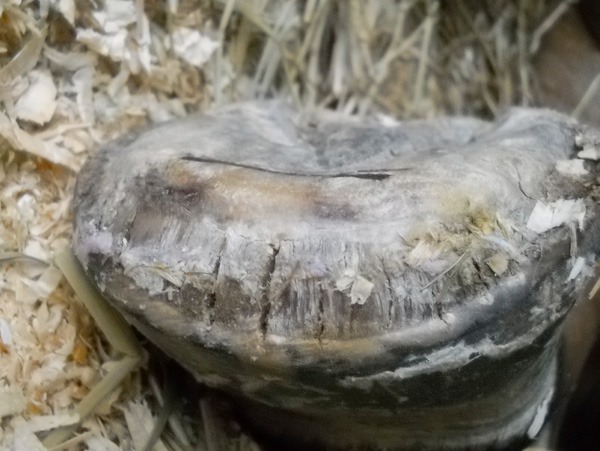
Robin’s left front toe after a trim on July 23, 2013.
At the front of the hoof, I wanted to get rid of the stretched white line area. I put the sander on the outside of the front of the hoof at the toe and pressed as I moved the sander around the toe. Rasping would have accomplished the same thing. At times, the hoof “wall” that was left looked really scary, but I just had to believe that all that bad wall would go away eventually.
On the sides of the hoof, I wanted to get rid of the flare. What is flare? If a laminitic horse has a groove, or gutter, around the bottom of the hoof where the white line used to be, the wall outside that gutter is flare. That detached wall is hitting the ground and likely feeling about as comfortable as a loose fingernail. It needs to go.
Robin’s whole hoof got noticeably smaller. Because I was so timid and Robin so sore, I did a teeny bit every night. Now, I work on him once a week to maintain what I’ve accomplished. He can stand on each foot for a long time.
As for the bottom of the foot, I left it alone.
As I described in my other post, the principle behind this is to allow the sole to become much thicker and put the horse’s weight on that sole, not on what’s left of the compromised wall. The loading of the sole pushes the dropped coffin bone back up in the skeleton. Sounds crazy, but it works.
Of course, when you make a horse walk on its sole, the horse pretty much has to be booted and given padding inside the boot or fitted with some sort of styrofoam taped to the feet.
The change in Robin’s feet has been remarkable. If I didn’t take the photos in the video below, I wouldn’t believe this was the same horse.
If I use the grooves next to the frog as a measurement for where the coffin bone is, as farrier Ramey suggests, it’s easy to see that the coffin bone has moved higher in the foot relative to the ground and the sole is actually starting to slough off some of the extra thickness as it works to become concave again.
Watch the video below of his foot transforming. The video is less than 90 seconds and rolls through photos of Robin’s left front foot from May 18, 2013, to October 12, 2013. I’m amazed.
Robin’s left front foot evolves from May 18, 2013, to October 12, 2013
